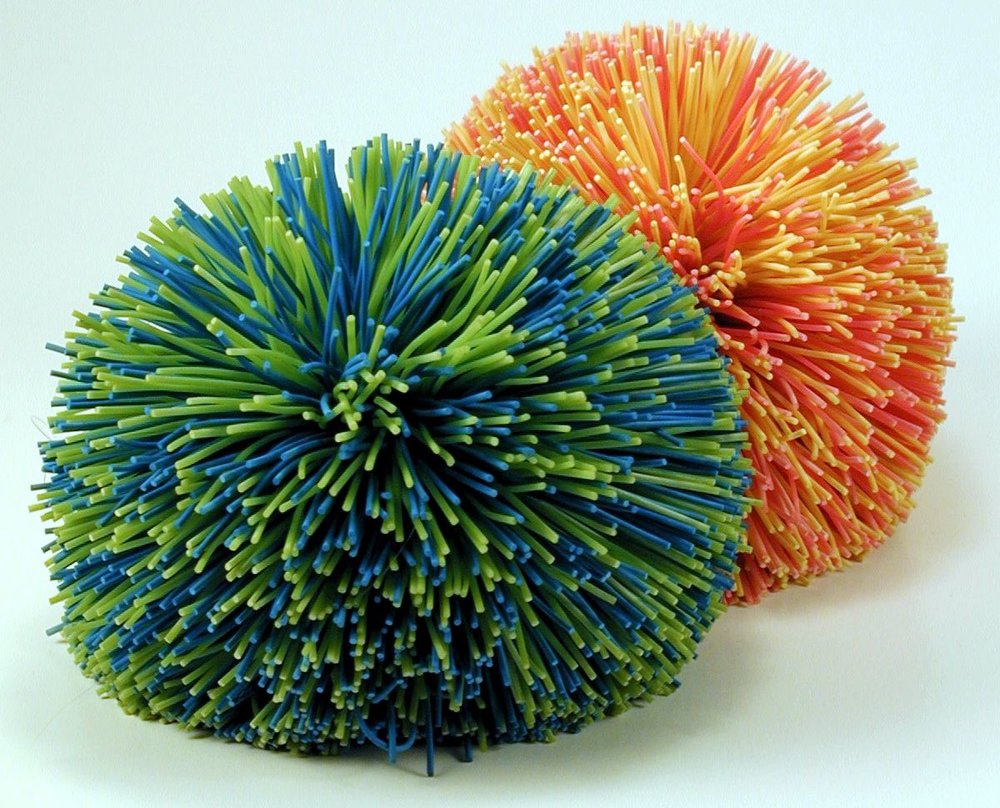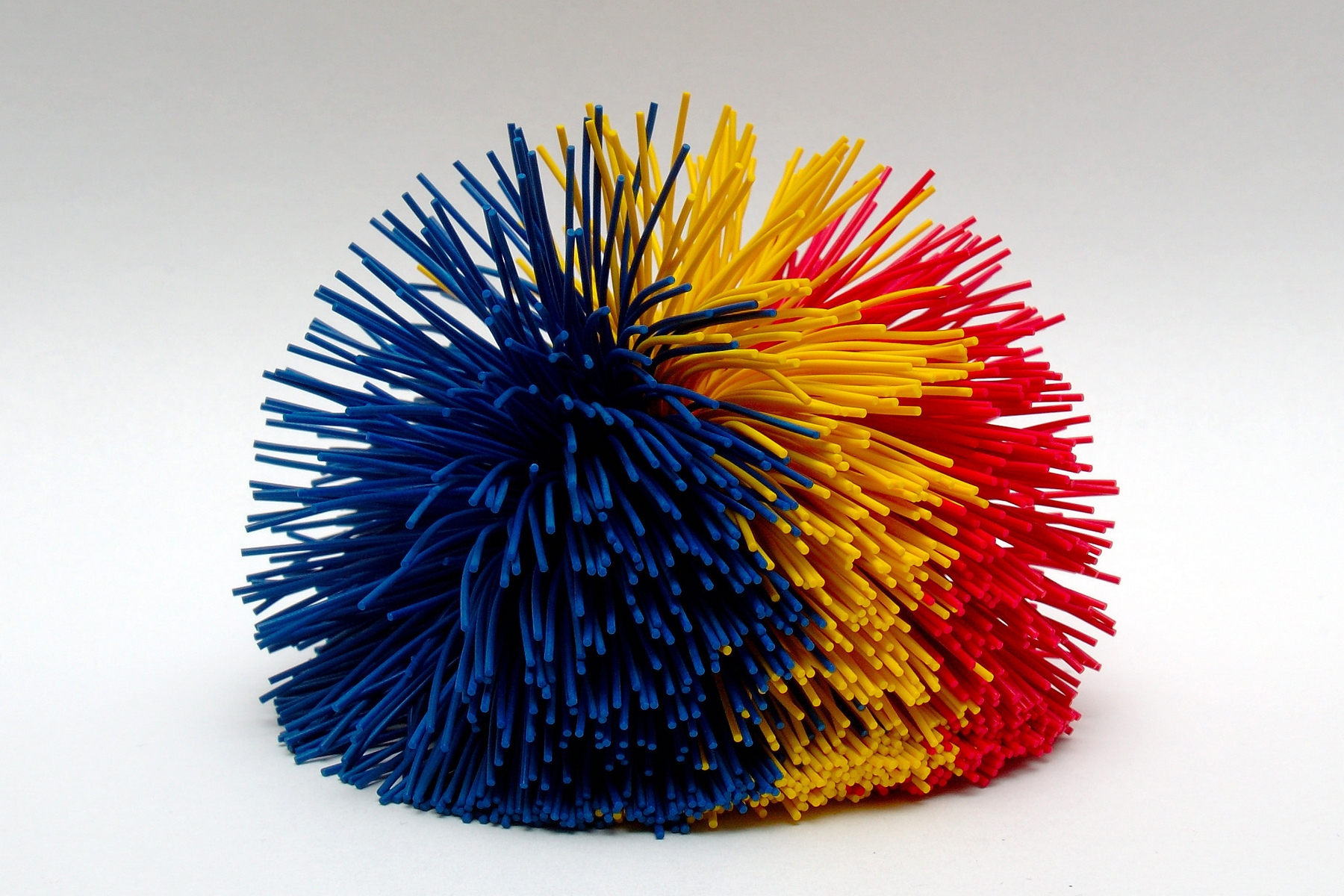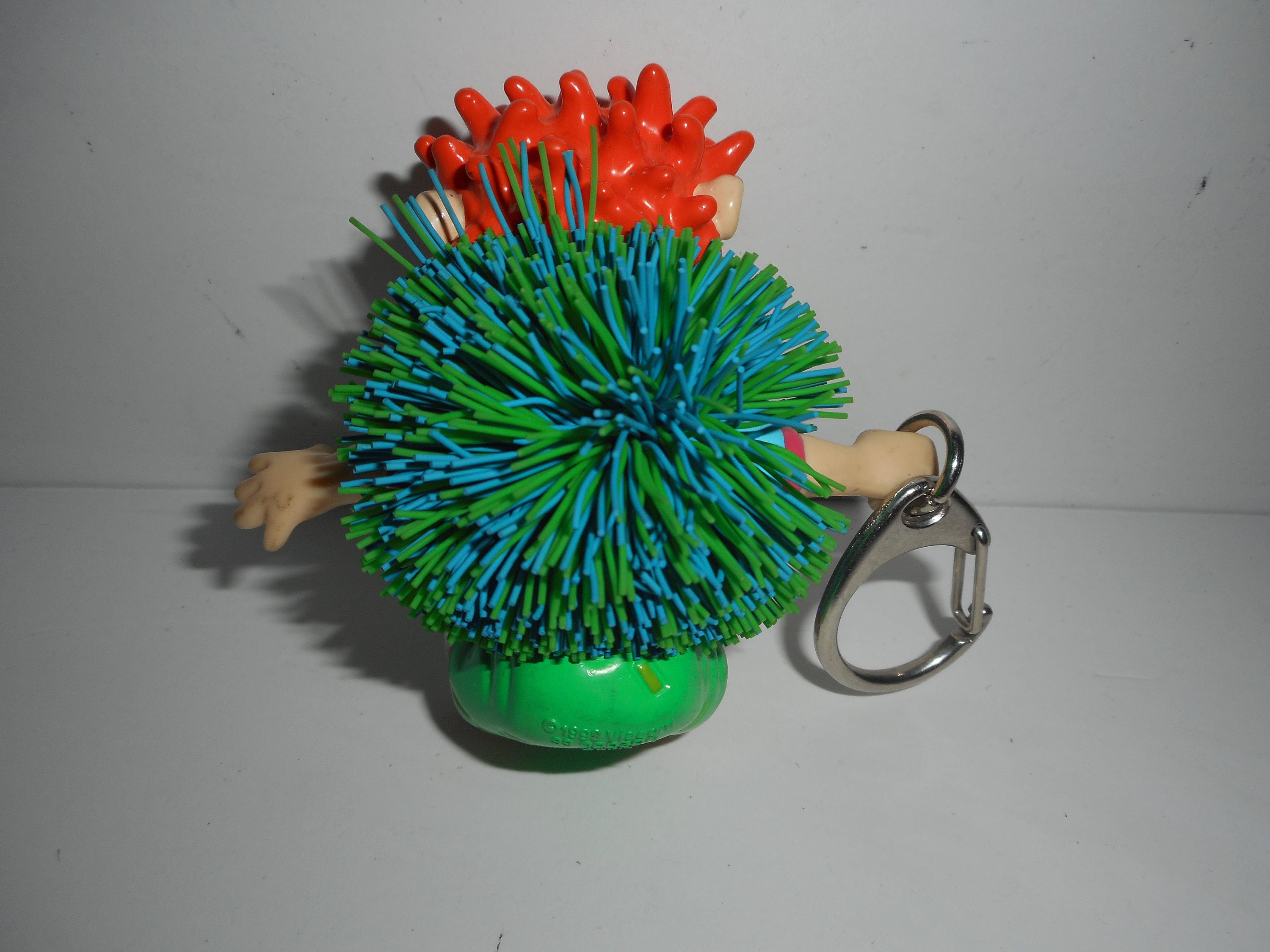
Koosh Ball is on Time magazine’s List of 100 Greatest Toys!

The Koosh Ball, made from rubber cords and connected to a mushy core was satisfaction goals before satisfaction even became a thing. This little hairy toy was so easy to catch and throw, and you could even hit someone with it and it wouldn’t hurt at all. It was so fun, and it still is! Get yourself a new Koosh Ball and let the fun times begin!
The Koosh Ball was invented by a genius engineer who wanted to teach his kids how to play catch but the invention ended up become a worldwide sensation and it was even included in Time magazine’s list of 100 greatest toys ever. Here are a few interesting facts about the Koosh balls that you probably didn’t know, even if you grew up playing with them.

The Koosh Ball was invented by a genius engineer named Scott Stillinger who wanted to teach his kids how to play catch
How the Koosh Ball was Invented
It was in the late 80’s when an engineer named Scott Stillinger was trying to play catch with his two young children, but the ball was too hard and bouncy for the kids to catch so he decided to come up with the brilliant idea for a Koosh ball – something that was soft, had a perfect bounce and could easily be caught by children with tiny hands. The engineer told the Christian Science Monitor that he knew that a rubber-filament ball could work, but at the time he didn’t know how to make one.
He initially designed a ball using rubber bands to absorb the energy and began refining the design to make it look more appealing to the kids. He eventually created the perfect koosh ball with soft rubber latex in bright colors. The ball was completely natural and non-toxic which made it such a big hit with youngsters.
When Stillinger developed the first prototype for the ball, he was so confident about its success that he even left his job as an engineer. He and his brother decided to start their own company called OddzOn which sold unique toys. He took the initial version of the koosh ball to a toy store and the owner was stunned by the design and told Stillinger that the toy would make him a millionaire.

In 1988 Stillinger received a patent for the koosh ball’s unique design and was even admired for addressing some of the dangers posed by hard balls
Initial Hiccups
To sell the toys on a large scale, Stillinger invested in a manufacturing machine that would make the balls for him. In 1988 he received a patent for the koosh ball’s unique design and was even admired for addressing some of the dangers posed by hard balls. The soft rubber filaments absorb the energy upon impact and the ball itself is dense and floppy which helps children with small hands to catch it without hurting themselves.
The Secret Life of Balls recently revealed an interesting fact about the koosh ball while it was still relatively new on the market. The media initially made fun of the ball and even compared it to the Star Trek tribble. Some were even drawing resemblances with sea urchin and calling it the ‘Pet Rock of 80s’.
Many people in the retail industry were confused by the ball’s design as saw the rubber filaments as completely unnecessary, but these reactions were short-lived and once the product hit the shelves in 1988, it sold over 14,000 pieces country-wide, becoming the Christmas bestseller for that year.

In 1994, Stillinger finally decided to sell his successful toy company to New Jersey-based Russ Berrie
A Successful Venture
Stillinger soon came up with different versions of the koosh ball in various sizes and filaments for kids of different ages. The balls quickly made their way from the supermarket aisles to physical therapy classes in universities and fitness centers around the country.
The toy was such a hit that it earned its own book called ‘The Official Koosh Book’ which included different types of activities that could be performed with the koosh ball. The toy also inspired a comic book series called the Koosh Kins in 1991 which told stories about the adventures of six living koosh balls, Boingo, GeeGee, Grinby, Scopes, T.K. and Slats.
In 1994, Stillinger finally decided to sell his successful toy company to New Jersey-based Russ Berrie. At the time of the acquisition, the toymaker had sold over 50 million koosh balls and was generating $30 million a year. The koosh line had also expanded considerably to over 50 products included darts, footballs, keychains and many other interesting toy variations.
More in Funhouse
-
Mr Jack Wager É Uma Casa De Apostas Para Inúmeras Apostas
Site Oficial De Apostas E Cassino On-line No Brasil Content Esqueci Meu Usuario Mr Jack Bet, Um Que Devo Fazer? Perguntas...
January 1, 2025 -
Roleta Online Games De Roleta Online » Betfair Casino
Mega Roulette Cassino Ao Vivo Jogo Apresentando Dealer Ao Vivo Content Exemplos De Apostas No Jogo Para Roleta Cassino Odds E...
January 1, 2025 -
Jogar Crash Slot Aviator No Casino On-line 1xbet
“Jogo De Choque Elizabeth Slot A Recurso Financeiro No Casino Online Content Outras Estratégias E Truques” “Em Virtude De Jogar Parimatch...
January 1, 2025 -
Pin Up Casino Türkiye Resmi Site, Giriş, Bonuslar
Pin Upward Az Rəsmi Veb-saytı Giriş 10 500 -a Qədər 120%+250 Fs” Content Pin Up Online Casino’da Depozitosuz Bonusları Esencia Ve...
January 1, 2025 -
Cassino Kto Jogos Sobre Cassino Online Aqui No Brasil”
“Bons Cassinos Online Do Brasil Em Dezembro 2024 Content #5 Bc Game: O Mais Interessante Crypto Cassino Afin De Brasileiros Perguntas...
January 1, 2025 -
Top Casino Seiten
Online Casino Deutschland: Top Anbieter 2024 Im Test Content Spielautomaten Darüber Hinaus Jackpot Spiele Willkommensbonus Und Freispiele – Deutschlands Regulierung Nicht...
January 1, 2025 -
“Ridiculous Time Risultati, Statistiche & Live Stream
Crazy Time Game Demonstrate: Gioca Live Attualmente” Content Gioco Responsabile Big Time Gaming: Quali Sono I Tratti Distintivi Di Queste Position?...
January 1, 2025 -
Verde Casino Polska Oficjalna Strona ️ Benefit 5000 Pln
Verde Kasyno ️ Najlepsze Kasyno On The Internet W Polsce” Content Najlepsze Verde Kasyno! Verde Casino Najczęściej Zadawane Pytania 💬 🌿...
January 1, 2025 -
: Online Sports Bets ᐉ “1xbet” ᐉ 1xbet Com
1xbet Somalia App 1xbet Mobile Download 1xbet Apk For I Phone & Android Thus 1xbet Com Content How To Use The...
January 1, 2025

You must be logged in to post a comment Login